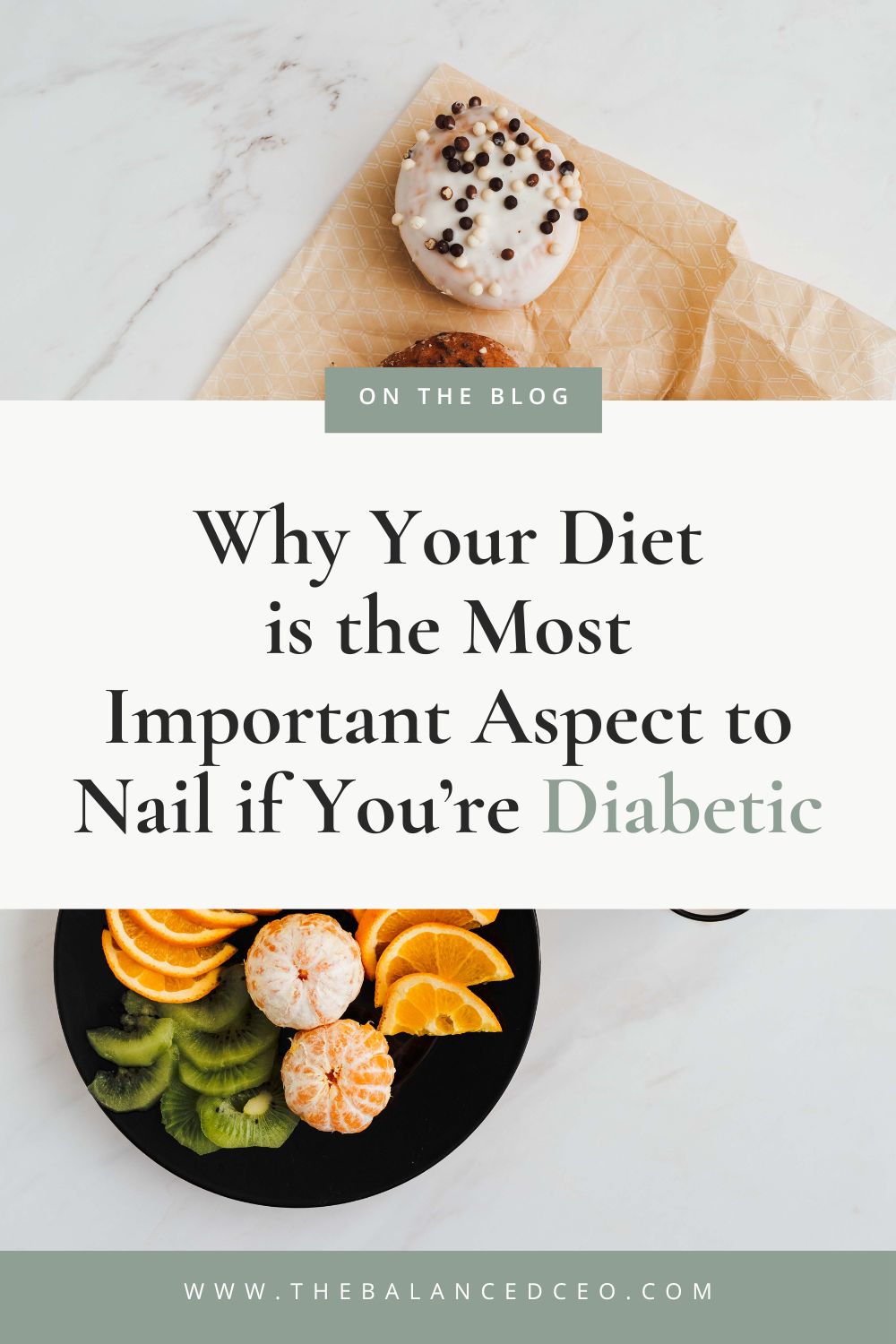This post may contain affiliate links, which means I’ll receive a commission if you purchase through my links, at no extra cost to you. Please read full disclosure for more information.

Living with diabetes is not easy. Managing it with a calendar of appointments, a planner full of tasks, or a day of meetings seems almost impossible. One way to make it possible is by focusing on an important cornerstone of diabetes management which is diet.
So, in what ways does diet affect the management of diabetes?
Blood Glucose Management
Diabetes is a chronic condition which affects the body’s ability to produce or process insulin, which in turn controls the levels of glucose in the blood. Glucose is one of the body’s primary sources of energy, along with fat and protein, and diet is the main source of glucose.
In order to have more stable blood glucose levels, portion control is important, as well as mindful eating. Limiting refined carbohydrates and unhealthy fats, while adding protein and healthy fat intake can also help stabilize blood glucose levels. A good way to do this is to prepare meals ahead of time so you can control your portions and ingredients better. This also helps you in busy times when you might not have time to buy food, so you are not tempted to eat fast food.
Weight Management
Excess body weight, as in the case of those diagnosed as being overweight or obese, is a significant risk factor for Type 2 diabetes and can worsen symptoms in Type 1 diabetes. Obesity can also increase the risk for diabetic complications such as heart disease, stroke, and dementia.
An important factor in weight management is a well-balanced diet partnered with lifestyle changes and healthy choices. One very useful option for those who are too busy to plan each meal around weight management is to use diabetic weight loss programs which incorporate food information, meal planners and trackers, physical activity prompts, and blood glucose monitoring for better eating without guesswork.
Glycemic Index Control
Glycemic index (GI) is a measure of how quickly a food can make blood glucose rise. A lower glycemic index means the blood glucose rises slowly after eating the food, while higher glycemic index causes a rapid rise in blood sugar. High GI foods can make it harder to control diabetes.
There are strategies to reduce the GI of some foods and meals in general. These include adding lower GI foods to higher GI foods or adding foods that can delay digestion such as high-fiber foods, fat, protein, and vinegar. Other ways include consuming whole unprocessed foods, or trying shorter cooking times or reducing water to increase resistant starch. Opt for home-cooked meals over dining out. Batch cooking and freezing when you have time, or opting for meal deliveries or meal prep options where you can pick your ingredients and cooking preferences, can be helpful.
Nutrient Intake
People with diabetes have been observed to have lower levels of some vitamins and minerals, such as vitamins A, C, E, magnesium, and zinc. and at the same time some nutritional deficiencies can also increase the risk for diabetes.
A well-balanced diet would ensure you get adequate amounts of essential vitamins and minerals, which are crucial for overall health and immune function. Incorporating a variety of nutrient-rich foods helps prevent deficiencies and supports overall well-being. To accomplish this while also handling and decreasing anxiety at work, is to prepare and pick diets rich in protein, fruits,and vegetables to the nutrients your brain needs to function at its best.
Reduced Risk for Complications
Diabetes can bring health complications such as heart disease, chronic kidney disease, stroke, vision loss, and nerve damage. Managing blood glucose is important in avoiding complications. At the same time, healthy diets can significantly reduce some of the risk factors for these diseases such as high blood pressure and high cholesterol.Stocking up on heart-healthy diet staples with foods such as vegetables and fruits, whole grains, lean poultry and omega-3-rich fish is a good way to start incorporating these foods in your diet and have easy access to them during hectic times. Avoid foods with trans-fat, saturated fats, and added sodium and sugars by scanning labels with available apps to check ingredients you don’t recognize to help reduce risk for high blood pressure and high blood cholesterol.
Isobel Conrad
Written By
Isobel Conrad is an entrepreneur, fitness enthusiast, and mom with a passion for sharing anecdotes and practical wisdom. She believes that living a healthy life helps one better juggle the demands of entrepreneurship and modern womanhood.





Leave a Reply